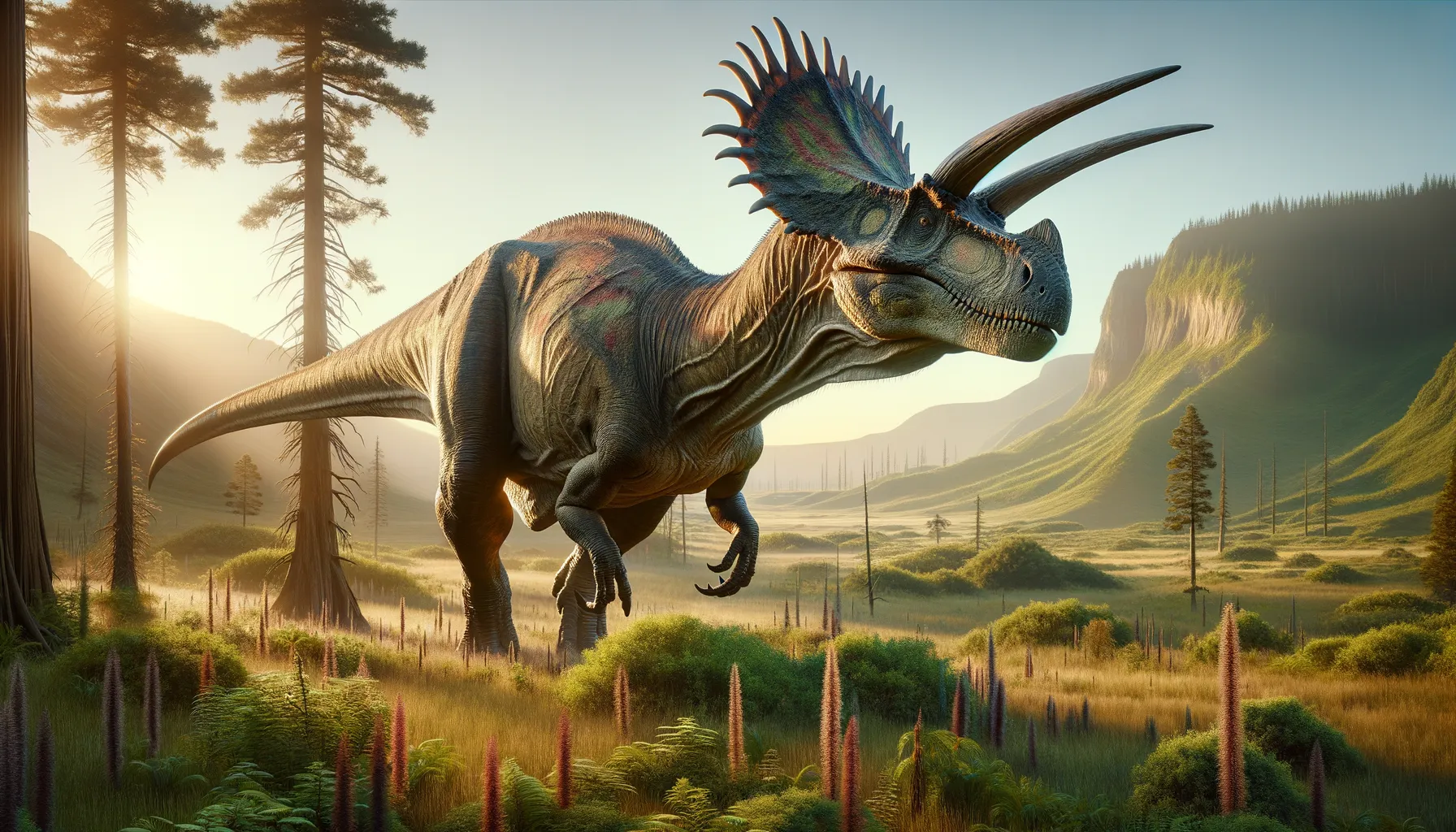
Acristavus
Ancient trailblazer of the duck-billed lineage.
Period
Cretaceous
Length
Approximately 30 feet long.
Height
Around 8 feet tall at the shoulder.
Weight
Approximately 3 tons.
Acristavus, known as 'non-crested ancestor', was one of the earliest hadrosaurid dinosaurs. With its robust body and absence of the distinctive crests seen in its descendants, Acristavus played a significant role in the evolutionary history of duck-billed dinosaurs. This herbivorous giant roamed the lush landscapes of North America during the Late Cretaceous, adapting to various environmental challenges of that era.
Diet
As a herbivore, Acristavus fed primarily on a variety of plants. Its diet likely included ferns, conifers, and flowering plants that were abundant during the late Cretaceous period.
Hunting
Being a herbivore, Acristavus did not engage in hunting. Instead, it foraged for plant materials across its habitat, using its strong jaws to process tough vegetation.
Environmental challenges
Acristavus lived in an era marked by significant geological and climatic changes. It had to adapt to shifting climates and environments, which altered plant availability. Natural predators also posed a threat, requiring vigilance and herding behavior for protection. Additionally, seasonal changes could have influenced migration patterns and feeding habits, making survival a complex task.
Speed
Moderate due to its heavy build.
Lifespan
Estimated to be around 20 to 30 years.
First discovery
Discovered in Montana and Utah, USA, in 2009.
Fun Facts
- Acristavus was a dinosaur that lived around 79 million years ago during the Late Cretaceous period.
- The name 'Acristavus' means 'non-crested grandfather' because it lacked the distinctive crests seen in some of its relatives.
- Acristavus was a type of hadrosaur, also known as a duck-billed dinosaur, due to its flat, wide snout.
- It was a herbivore, primarily feeding on plants like flowers, leaves, and possibly fruits.
- Fossils of Acristavus have been found in both Montana and Utah, indicating it lived across a wide range of areas.
- Unlike some of its more flamboyant relatives, Acristavus had a plain appearance without elaborate headgear.
- Its discovery helps scientists understand the evolutionary origins of later, more elaborate crested hadrosaurs.
Growth and Development
Acristavus grew from small hatchlings to large adults over several years. The growth process likely involved significant changes in diet as it matured, moving from softer vegetation to tougher plant materials. Its development was supported by a social structure that might have included family groups, aiding in protection and food acquisition.
Habitat
Acristavus inhabited a variety of environments ranging from coastal plains to floodplains. These regions were rich in vegetation, providing ample food sources for this herbivore. Freshwater sources such as rivers and lakes were integral to its habitat for drinking and possibly breeding activities. The landscape also offered opportunities for migration, which helped in resource distribution.
Interaction with other species
As a herbivore, Acristavus shared its habitat with various other dinosaur species. It likely coexisted with both herbivores and carnivores, maintaining a complex ecological balance. Predators such as theropods posed constant threats, but large herds and communal living offered protection. Competition for resources might have occurred with other herbivores, especially during scarce periods.
Natural lifespan
Acristavus had an average lifespan of 20 to 30 years in the wild.
Reproduction
Acristavus likely practiced egg-laying, with nests constructed in safe, protected areas. The incubation period was possibly monitored by adults to increase hatchling survival. Juveniles remained under the care of the herd, benefiting from security and social structure. Reproductive maturity was reached after several years, ensuring the continuation of the species.
Social behaviour
Acristavus lived in herds, which provided protection from predators and other dangers. Social structures would have included familial bonds, aiding in cooperative care of young. Communication through vocalizations and physical gestures was essential for maintaining herd cohesion. Such social structuring contributed to its success and survival within its environment.
Fossil locations
Fossils of Acristavus have been found in regions of Montana and Utah in the United States. These discoveries have provided insights into its distribution and environmental preferences. The condition and positioning of fossils have offered clues about the habitat and challenges faced by Acristavus. Such findings contribute significantly to understanding this early hadrosaurid's life.
